This last Saturday morning, the sun came out and we all felt like going on an adventure together. Sometimes, our adventures take us far(ther) away from home, but we all wanted to explore our place on this day and decided to walk a circuit along the edge of our home field and out to a distant spot on our rented land where in previous seasons we’ve seen a red tail hawk nesting.
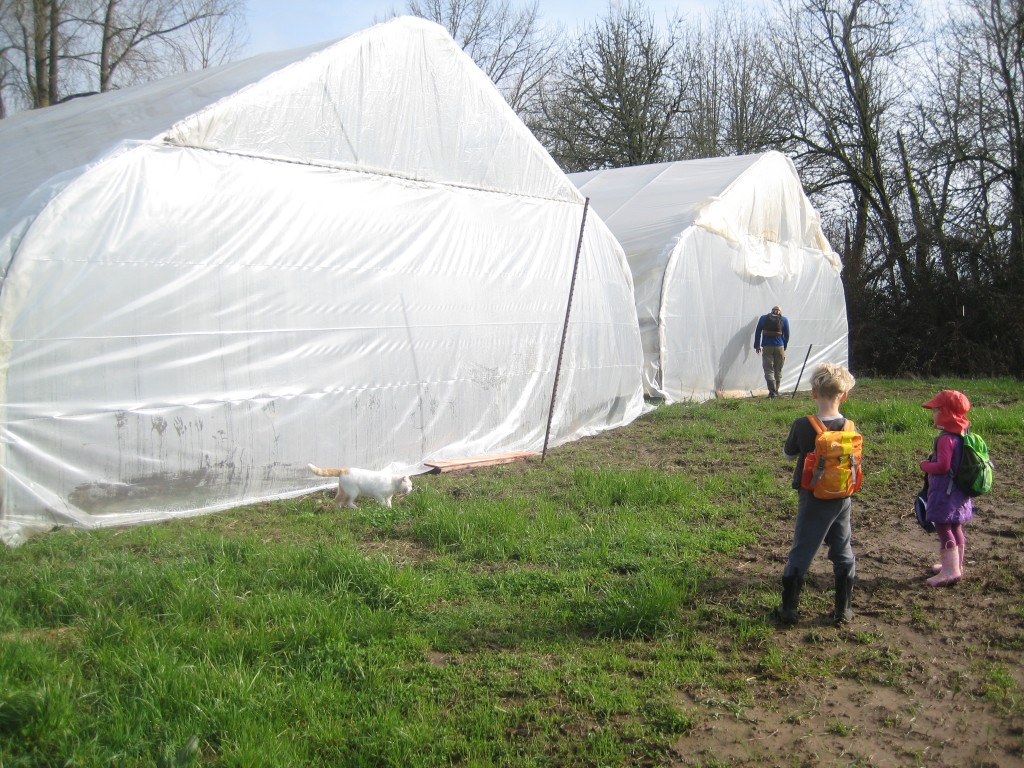
First stop on our walk: two of our four high tunnels, all closed up for maximum February warmth inside.
We began by visiting one of our high tunnels (which I talked about at length in last week’s newsletter). Late last week, Casey planted out the first of this year’s zucchini plants and wanted me to share in his excitement over a full and growing greenhouse.
Outside the greenhouse, I said hello to our farm cat Mokum, who was hanging out in one of our orchards.
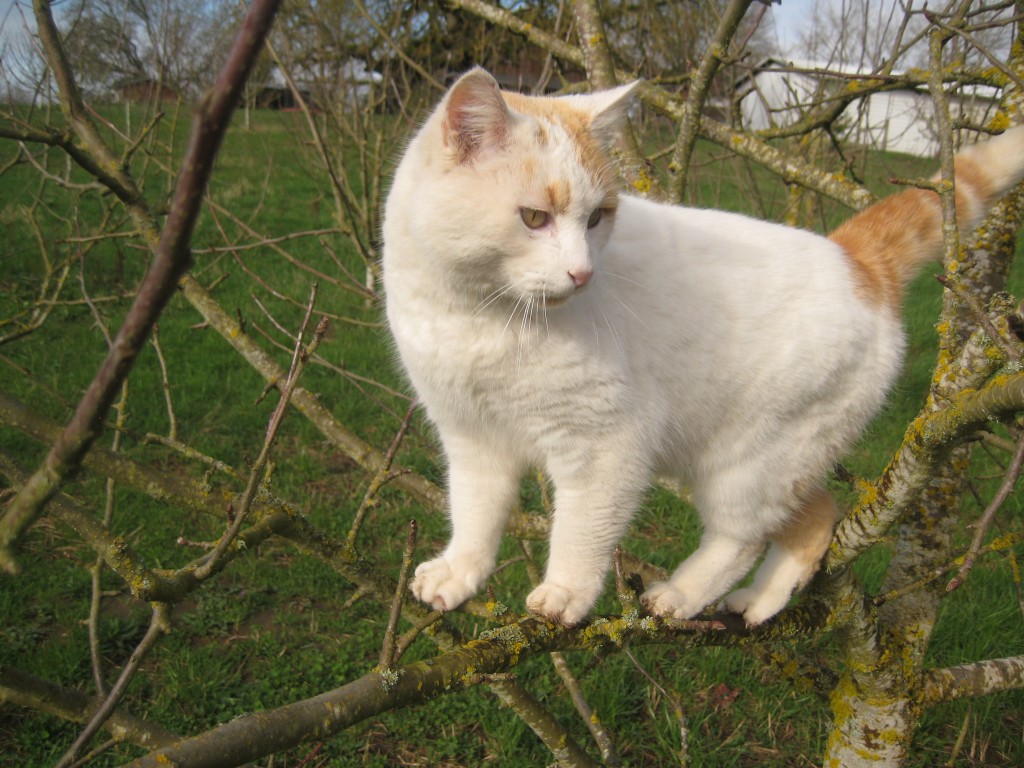
Mokum wanted a better view. After saying hello to all of us, he joined us for the rest of our very long walk.
Next, we wandered down to the first orchard we planted (back in early 2009).
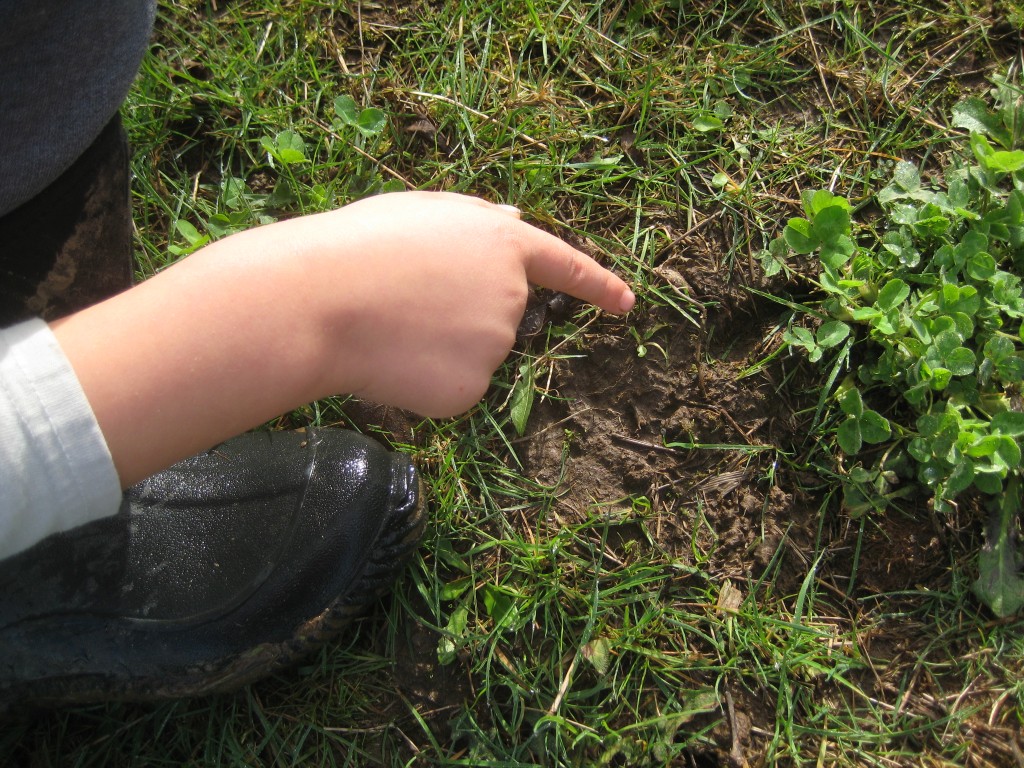
Along the way, Rusty spotted a deer track. We’ve seen tracks along the creek at the edge of our fields regularly lately.
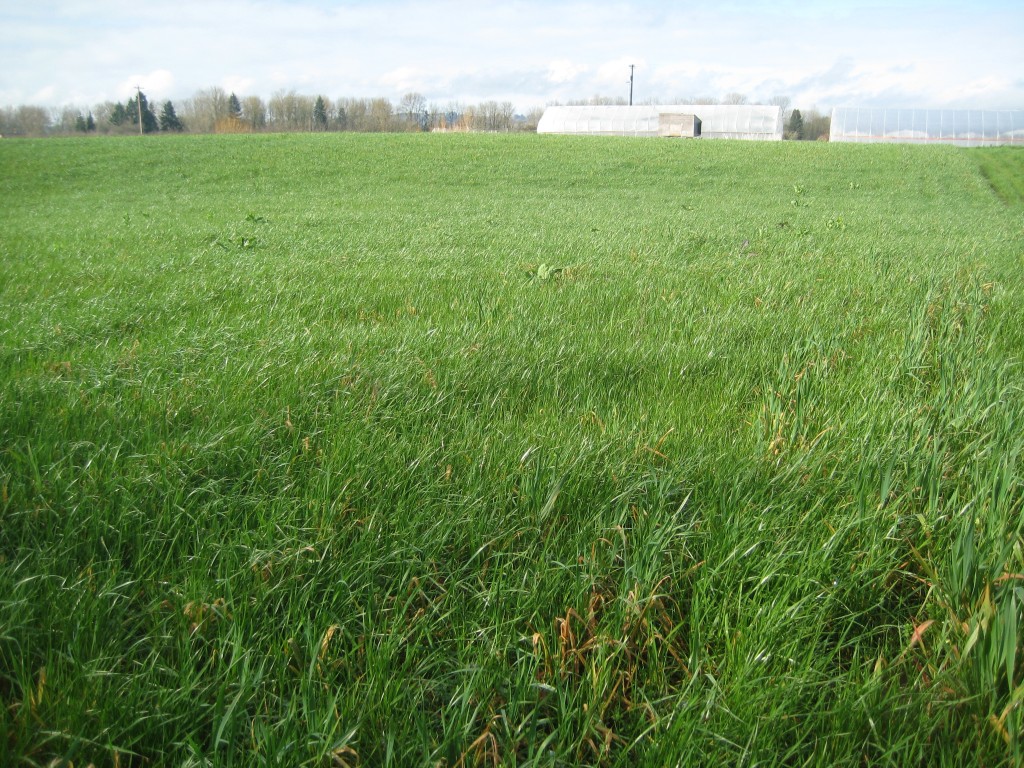
We also appreciated the green of our over-wintered oat cover crop. This field is where we plant the majority of this year’s vegetables crops.
At the orchard, we checked on the earliest plum blossoms. They were bulging and looking ready to burst open. By now, there’s lots of open white blossoms on these trees, but on Saturday they were just on the verge.
If we needed more signs of spring’s presence, we found it as we headed back around the corner to our land on the other side of the creek — we found some random daffodils growing in the hedge along the creek!
At our land next door, we found ourselves going deeper into that vibrant gray area between carefully cultivated fields and the wilderness. Those fields are farther away from any human homes and are rich with plant and animal lives who live at the edges or, in some cases, right in the middle.
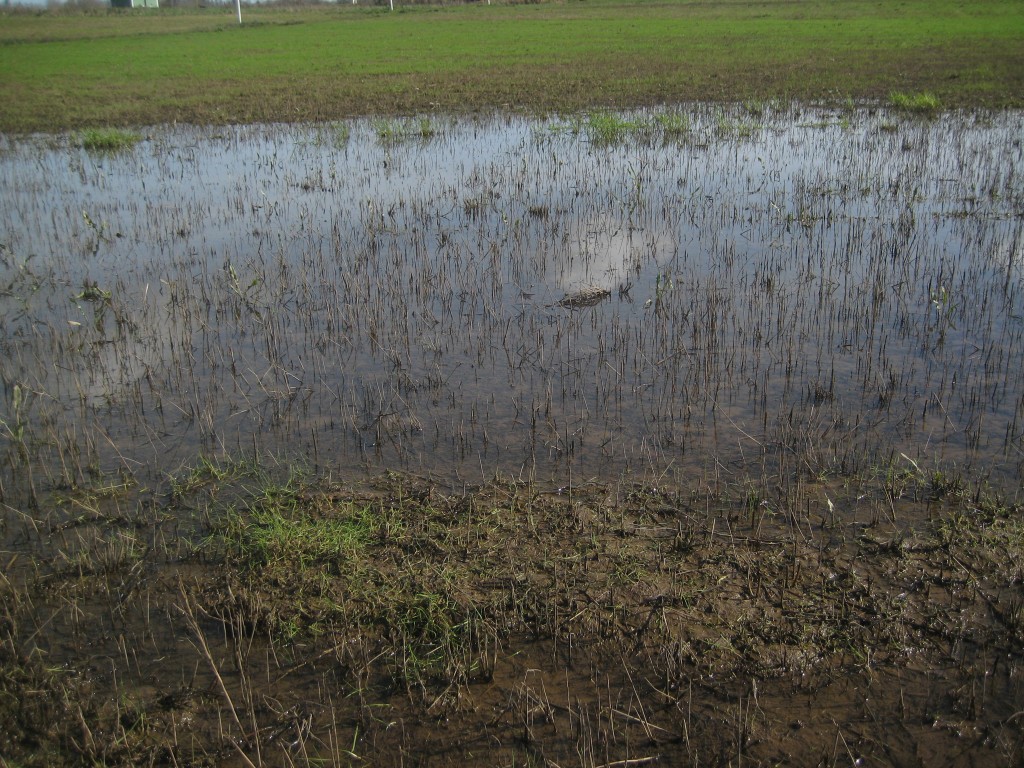
We have often found frog eggs in these large puddles left by receding flood waters in the middle of our field. We didn’t find any eggs here on this trip …
Ever since we expanded our acreage, we’ve been on a journey to figure out exactly how to best steward 100 acres of land. Our ideas of how that goal fits into our farm’s business have evolved and are still evolving. But without a doubt, we love knowing that all of this land is now organic and that our farming practices have allowed more and more wildness to move into this space that is now free of chemicals and free from monoculture agriculture. Diversity teems.
Any single hour spent outside, three or four different kinds of raptors may fly overhead. Over the entire year our farm is visited regularly by Red Tail Hawks, Bald Eagles, Osprey, Kestrels, Harriers, Cooper’s Hawks, and Turkey Vultures (and many types of owls at night). All the smaller birds delight our ears with their calls all day long.
As we continued our walk, we saw two more signs of important land-bound animals that make our farm part of their bigger home.
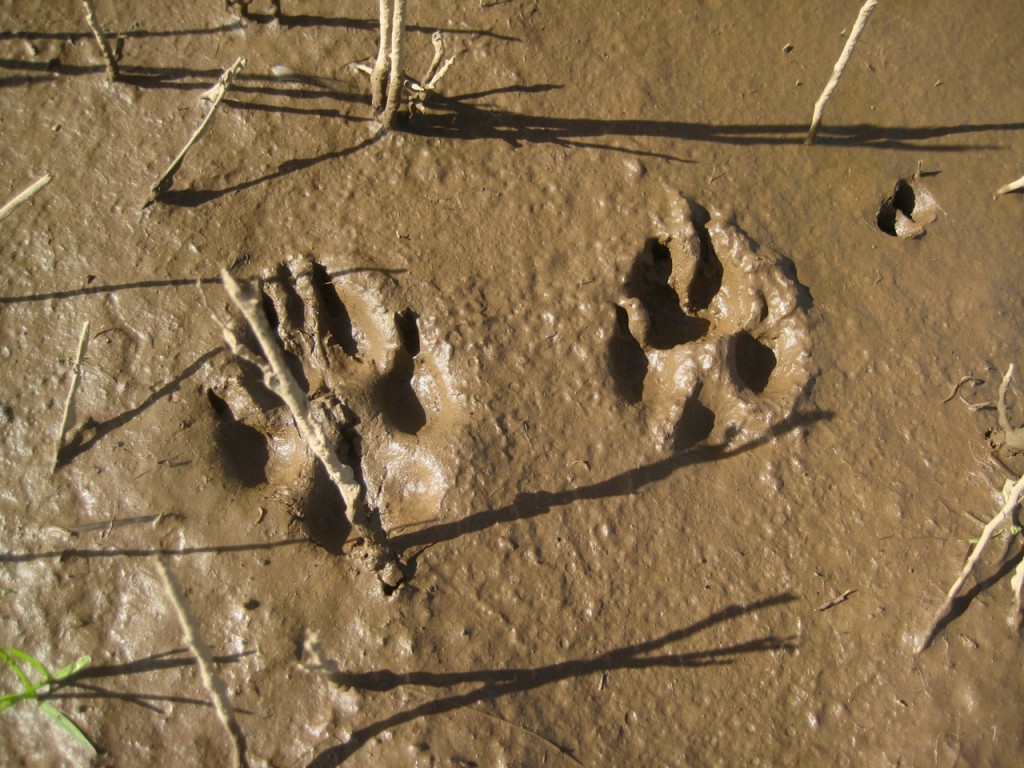
Coyote tracks! Or so we assume, since we don’t have a dog and we regularly hear coyote calling at night. Winter mud has been so great for seeing tracks on the farm.
And, as we looked up, we saw a deer running through the field far ahead of us, just below where we hoped to spot the Red Tail Hawk nest.
At this point, the wildness was starting to do its work on the kids, who waded deep into our search for frog eggs in puddles.
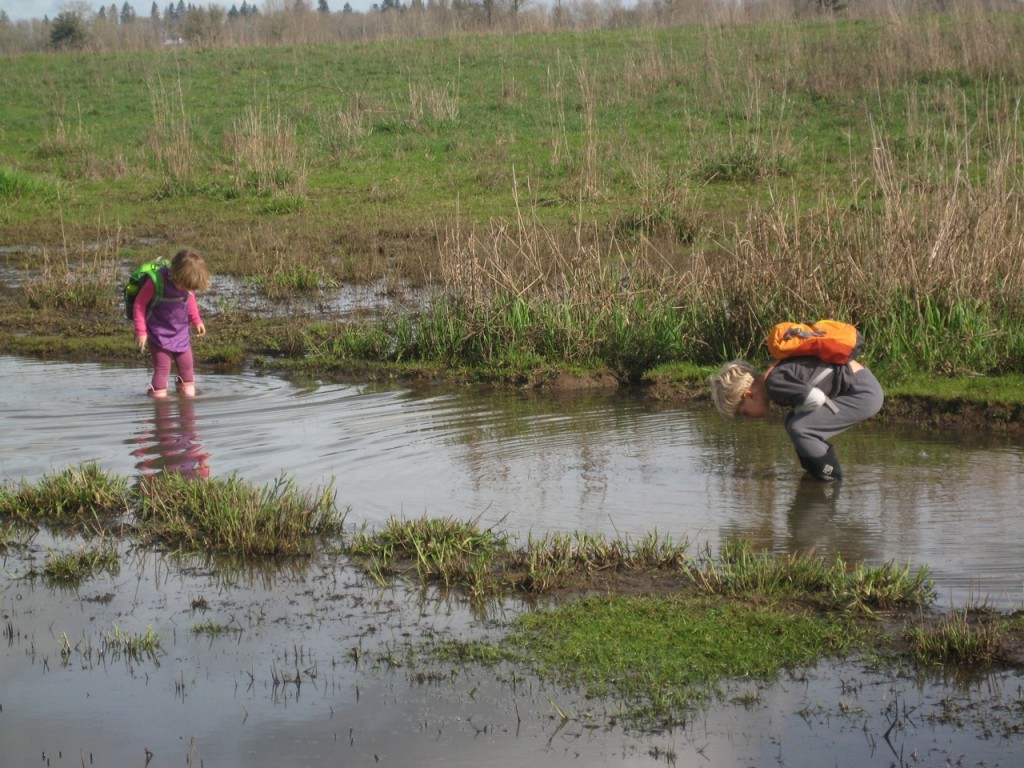
We did find a few amphibian eggs of some kind in these larger puddles, but they were in ones or twos rather than large masses — easy to miss in the sediment.
I found myself inspired too. Not to take off my shoes, but just to breathe deeper and more fully. How can I not feel inspired on a day such as this, surrounded by this beauty?
We’ve come to appreciate how essential these intersections are between agriculture and the wilderness. The scrubby areas at all the edges provide essential stable habitat, but our fields provide a dynamic kind of habitat for many smaller animals as well as food sources for insects, small mammals and all the larger life that feed on those. At times, we’re tempted to just let it all “go wild,” but ultimately I don’t think that’s the answer. Continuing to farm this space, with the wild in mind, can promote more life, more diversity. Always, those other lives and the vibrancy of the wider natural world are in the forefront of our mind as we choose how and where we farm on our land — how we work fields and when and to what extent. What we plant. What we [don’t] spray.
We spotted the nest, by the way. We didn’t get too close, because we want the hawk to stay, and we’re guessing that spot was chosen because of how far away it is from the likes of us. But we put out a picnic blanket and the kids ate a snack, surrounded by our open scraggly fields.
Winter is definitely a high point for wildness out here in the fields. Our presence as farmers is less obviously visible to the eye, even though we know how much of what we see has very much been shaped by our actions over recent seasons — the vast expanses of forage that we carefully seeded years ago and will be mowing and chopping this year. And, just a few hundred feet to the north of the nesting site, we reentered another more typical human landscape as we visited our third (and most recently planted) orchard. Here we found blossoms already open on our peaches.
Then we were hungry for lunch and headed back to our home, the kids still barefoot and enjoying every puddle along the way.
Our house greeted us with a hammock smile as we walked under the still leafless Black Walnut tree outside. Spring felt so present and even as we passed under those bare branches.
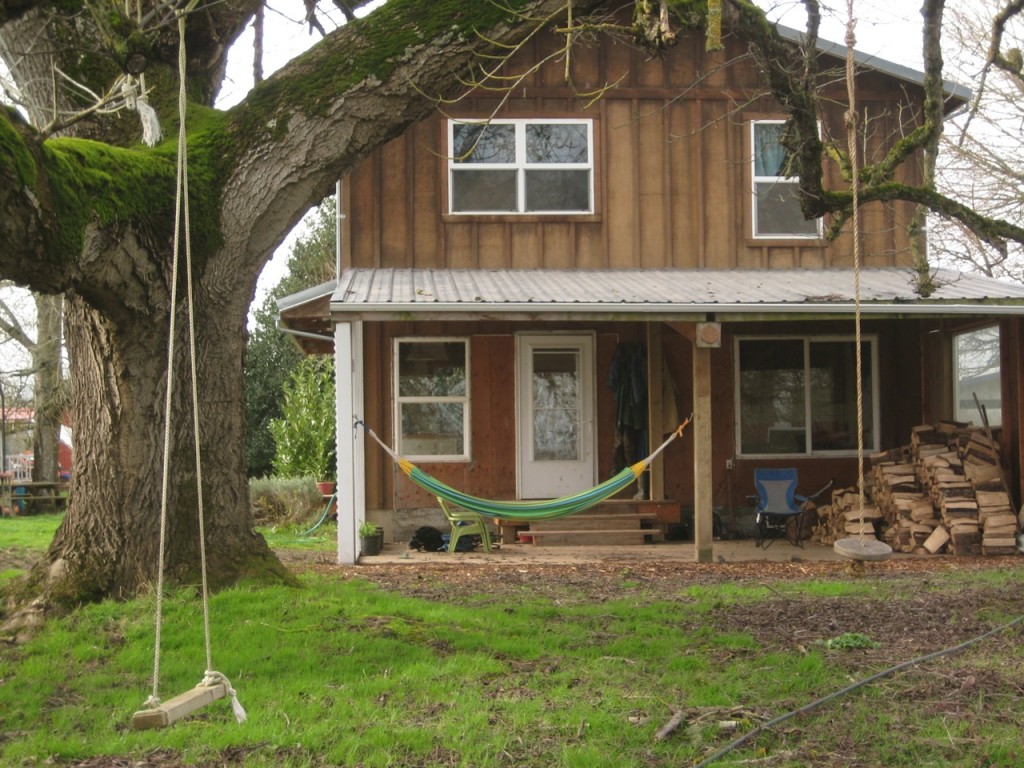
We’ve hardly touched our wood pile this mild winter, even though our woodstove is our only source of heat.
I made a mental note to refill our bird feeders by the house so we could enjoy more of our beloved wildness even closer to home.
What a place we live in! What joy our work is! On weeks such as this, when mild weather invites to truly savor our time outside we cannot imagine living anywhere else or doing anything else.
And, of course, it doesn’t end at the borders of our farm. Inspiring wildness abounds in our part of the world. Just this week, the kids and I went on a happy hike at Baskett Slough, and we spotted so many blooming trees in well tended yards and scrubby hedges all along the drive. We hope that you have been savoring all these late winter delights yourself — raptors and blooming trees and more.
Enjoy this week’s vegetables!
Your farmers, Katie & Casey Kulla
~ ~ ~
Meet this week’s vegetables:
- Apples
- Salad mix! — Casey made a salad mix for you all that is a mix of field grown over-wintered greens and tender greenhouse grown greens. It contains endive, spinach, and cabbage rapini. These greens all offer different flavors and textures from lettuce (but none of them are spicy or bitter). We love these winter salads. I recommend trying a creamy dressing and dress before serving up. Just pouring the dressing over the greens at the table won’t have quite the same effect as thoroughly coating all the leaves by tossing in a bowl. I usually use my [clean] hands to do this!
- Butternut squash
- Marina di Chioggia winter squash
- Turnip & mustard rapini
- Red Russian kale
- Mustard greens
- Chard
- Rutabaga
- Carrots
- Potatoes
- Leeks
And this week’s extra goodies from the farm:
- Eggs — $6/dozen
- Pork — Roasts and ground pork are $8/lb; pork chops and hams are $12/lb.
- Lamb — Roasts and ground lamb are $8/lb; chops are $12/lb.
- Ground beef — $8/lb

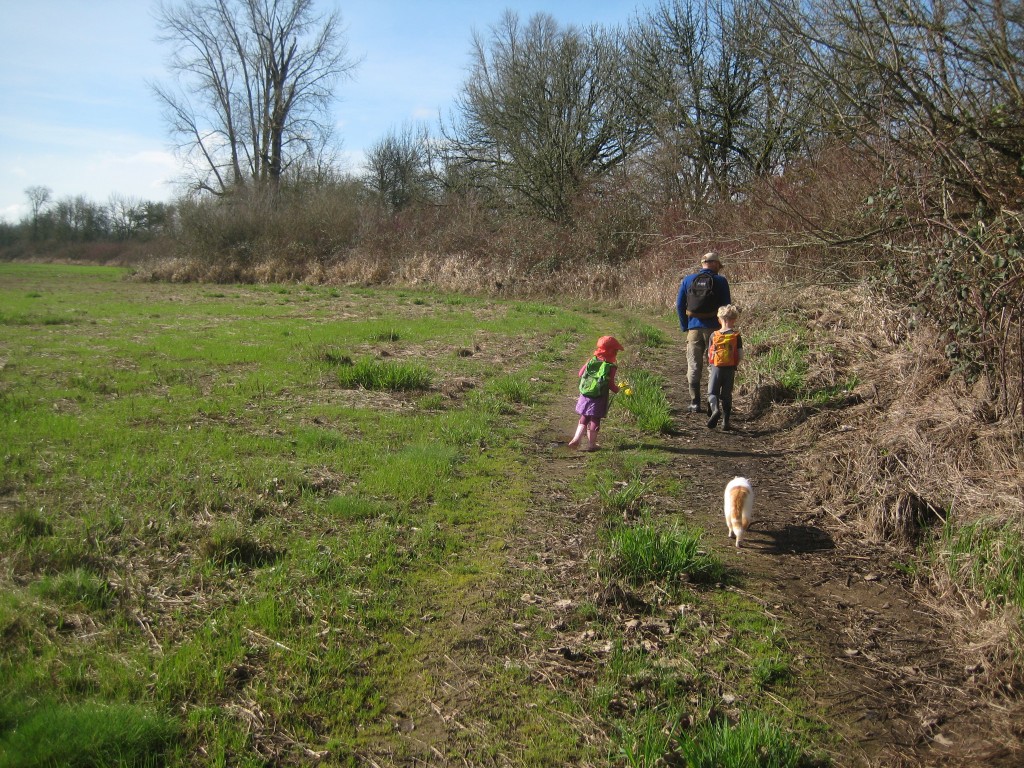
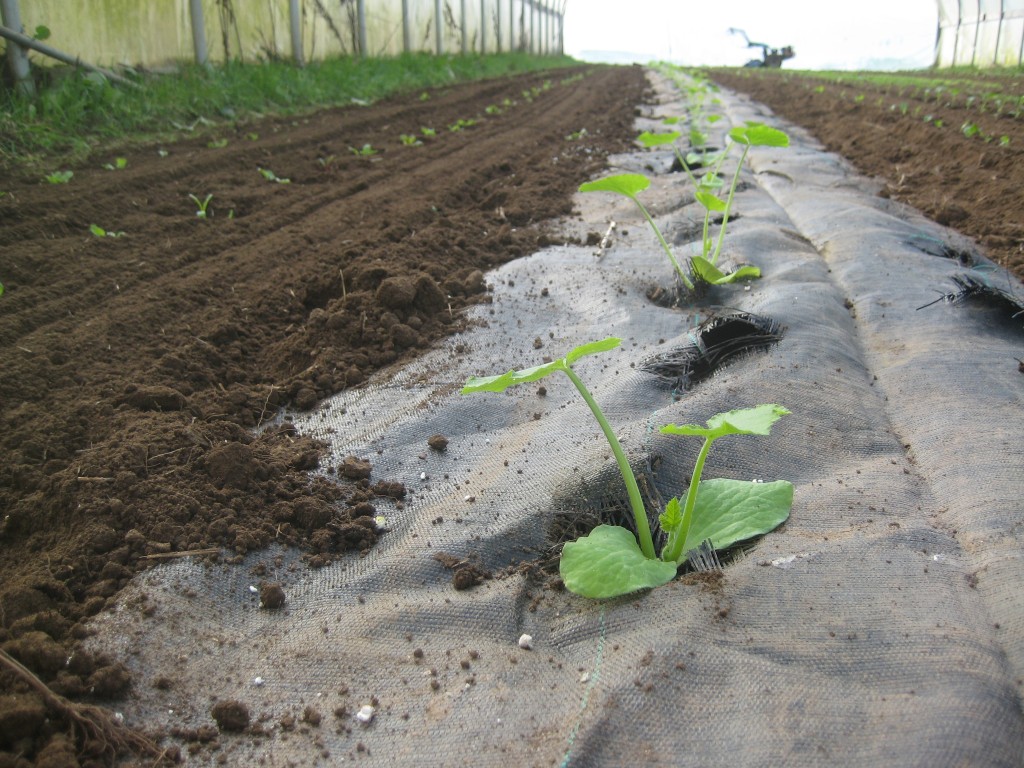
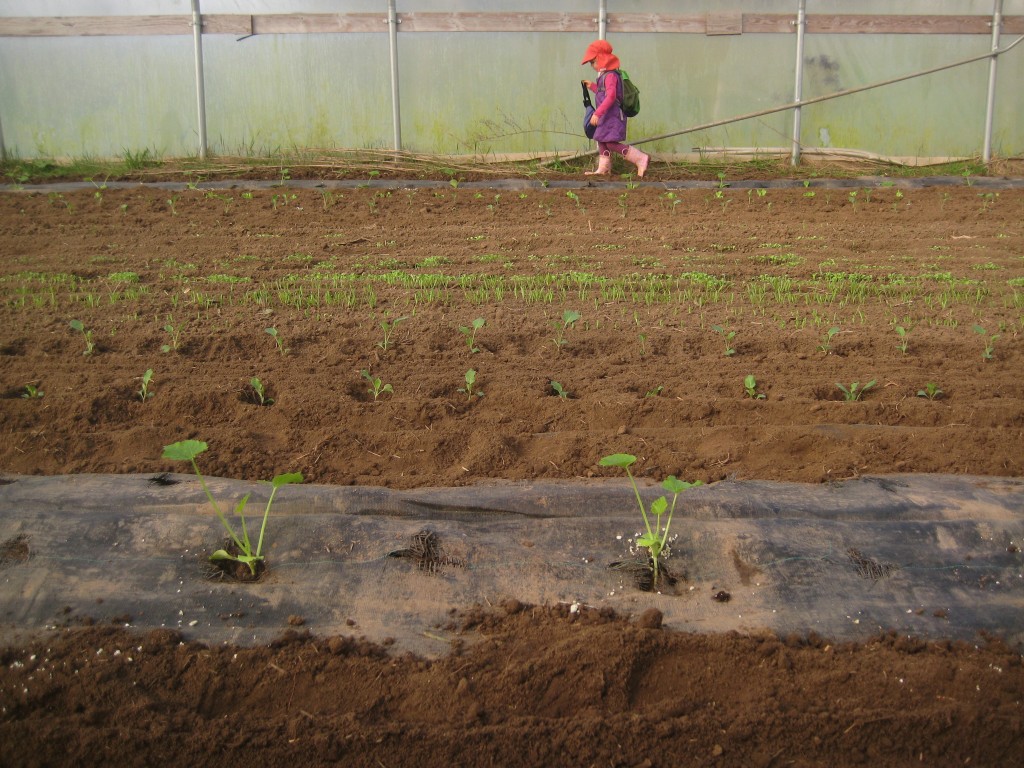
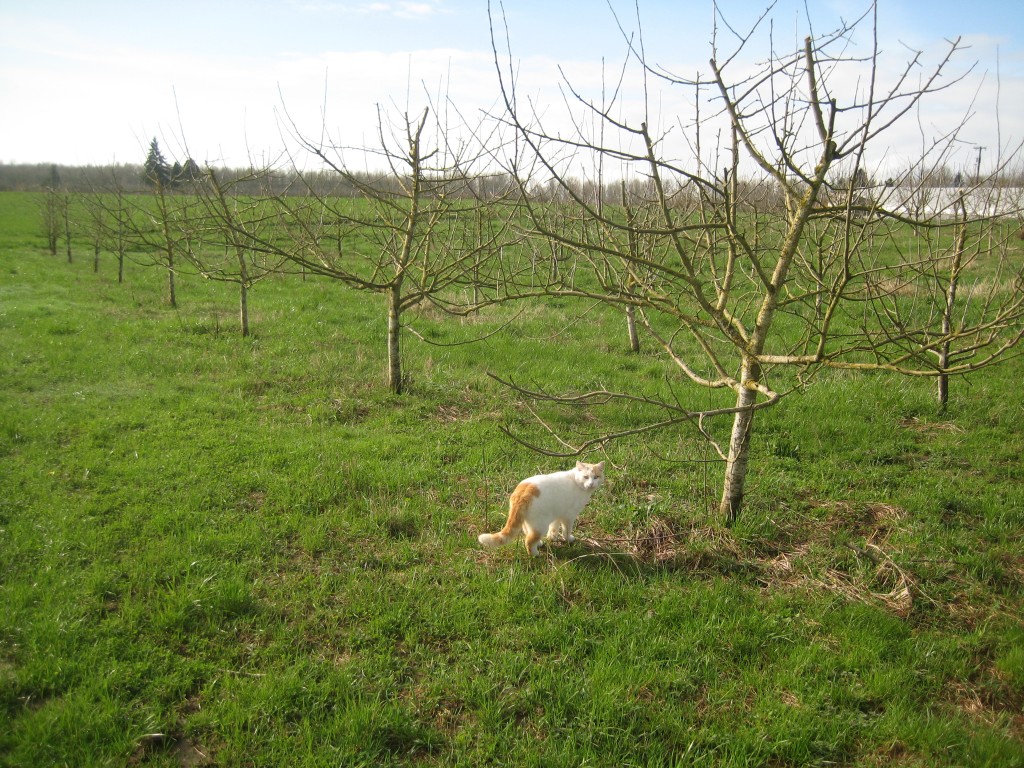
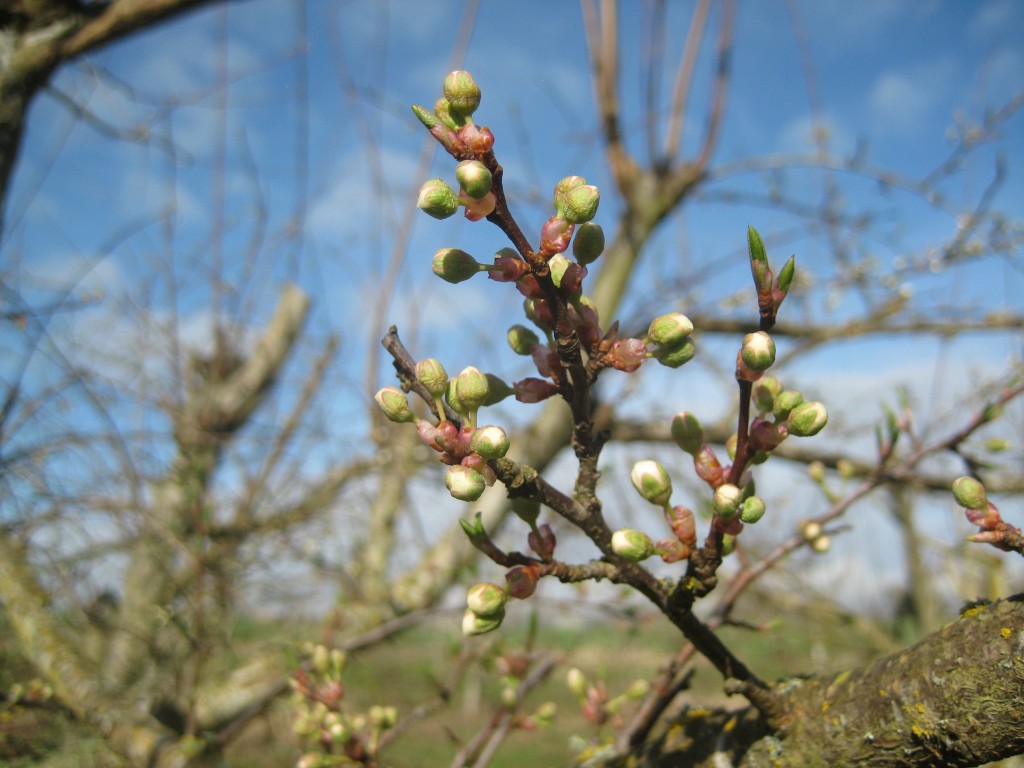
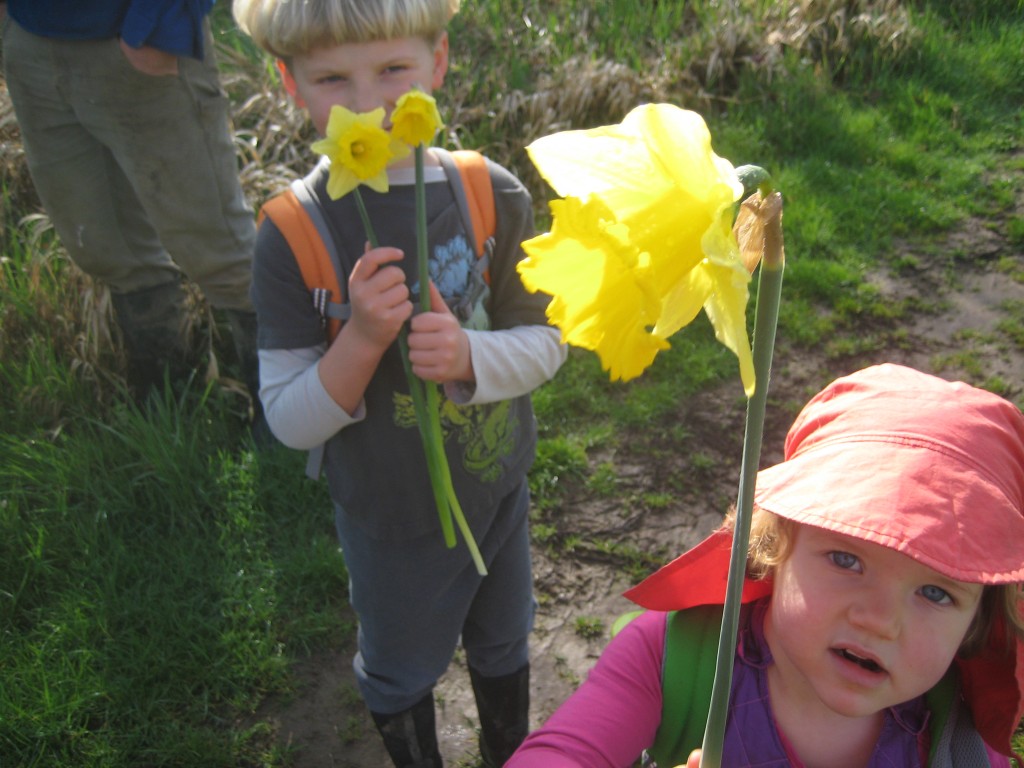
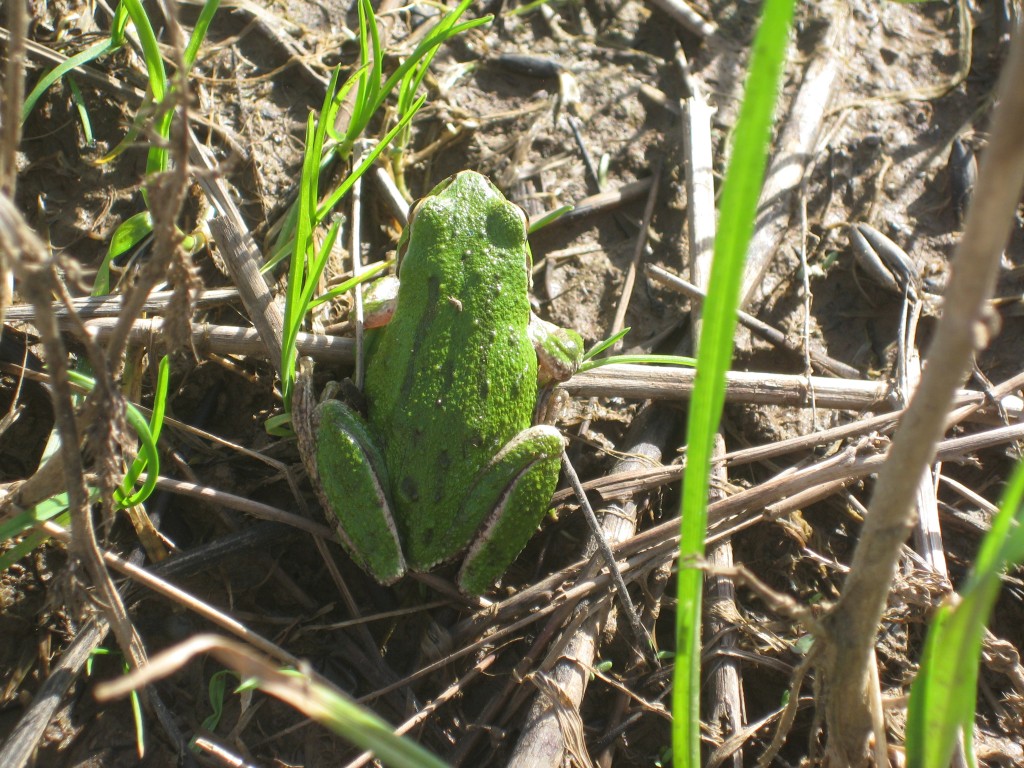
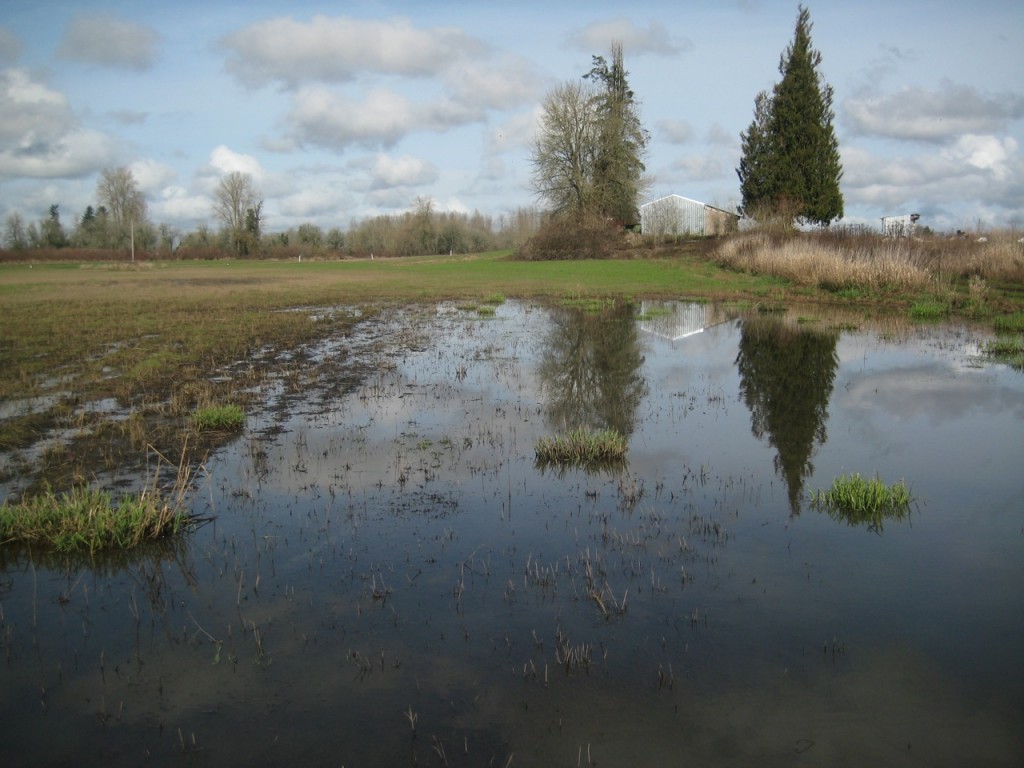
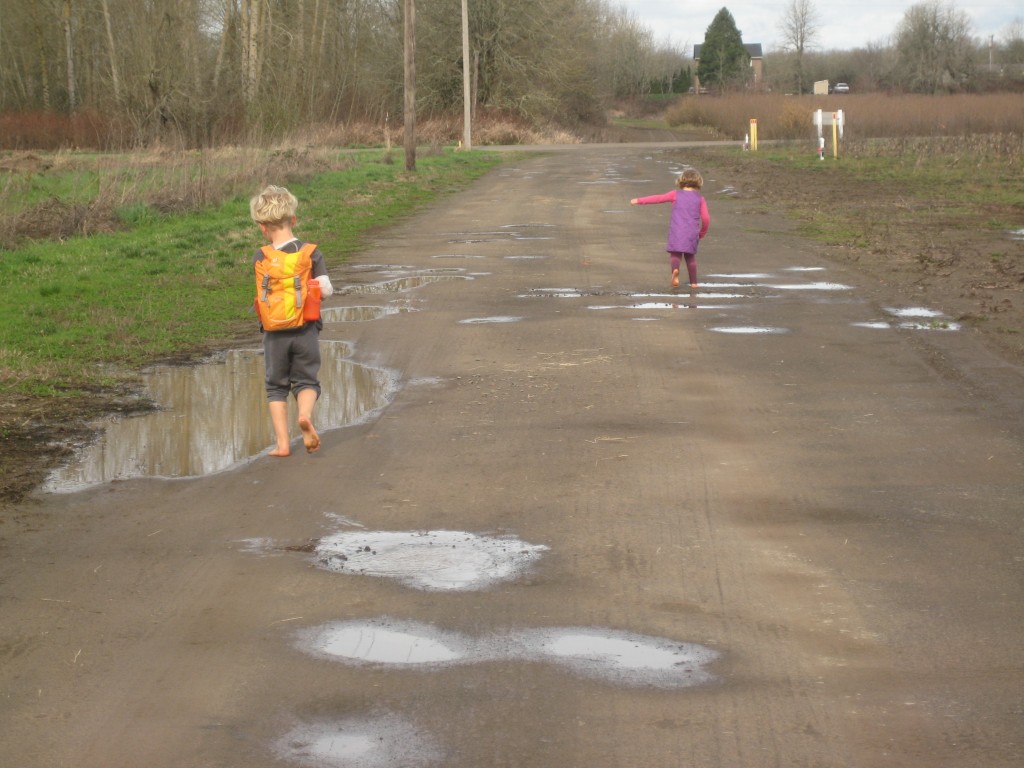


You’re my heroes! This is so beautiful, Katie!
Gee thanks Emily! Thank you!